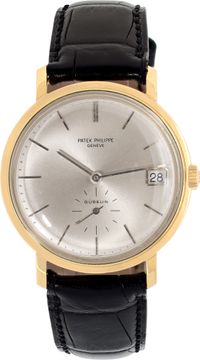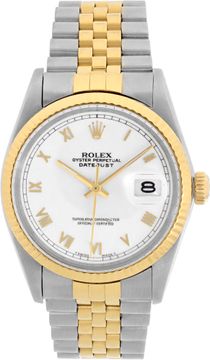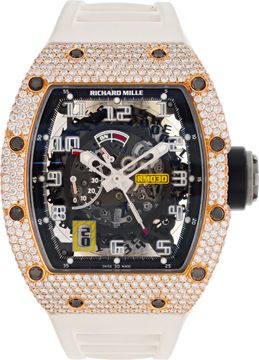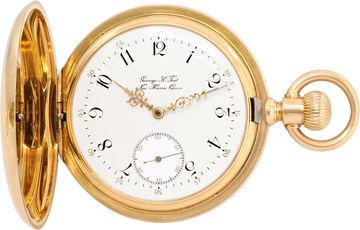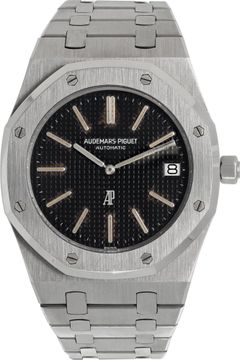Mastering Vintage Watch Restoration: A Guide to Restoring Your Treasures
How to Restore Vintage Watches to Their Former Glory

Image Link: https://www.grayandsons.com/w526101-patek-philippe-calatrava-345mm-2552/
Restoring vintage watches is a fascinating journey that combines art, craftsmanship, and a deep appreciation for horology. Whether you’ve inherited a family heirloom, stumbled upon a hidden gem, or simply wish to breathe new life into a cherished piece, restoring a vintage watch requires careful attention to detail. In this guide, we’ll explore the restoration process, including how to clean and care for different watch materials, while highlighting notable brands that excel in each category.
Understanding Vintage Watches
Inspect for fading or damage to markers and hands on your vintage timepiece. Generally, a vintage watch is at least 20 to 30 years old, representing a specific era in design and technology. Vintage watches are prized for their unique aesthetics and mechanical ingenuity, often carrying historical significance.
Assessing Condition
The first step in restoring any vintage timepiece is to assess its condition. Examine the following components:
- Case: Look for scratches, dents, or corrosion.
- Crystal: Check for cracks or scratches.
- Dial: Apply a small amount of specialized leather cleaner with a soft cloth, following the product instructions for watch restoration. Use a soft, lint-free cloth to gently wipe the watch case and bracelet while cleaning stainless steel. is an important step in the watch repair process to enhance visibility.
- Movement: If accessible, observe for rust or wear.
- Bracelet/Strap: Determine if the original strap can be salvaged or needs replacement.
Documenting Your Watch
Take detailed photographs of the watch from various angles. This documentation will be useful during restoration and will help you communicate with professionals if needed.
Different Watch Materials and Cleaning Techniques
1. Stainless Steel Watches
Stainless steel is one of the most popular materials used in watchmaking, favored for its durability and resistance to corrosion. Brands like Rolex commonly utilize stainless steel in their designs.
Video: https://youtu.be/xUGYxL2UpgU
Stainless steel is robust but can still show signs of wear over time. Professionals use the following methods to restore these durable cases:
- Bead Blasting: For cases that need a more matte finish, bead blasting is a common technique. It involves shooting small beads at the surface of the steel, which not only removes scratches but also gives a uniform, satin-like texture.
- Polishing: Unlike gold, stainless steel can handle more aggressive polishing methods. Professionals often use a combination of polishing wheels and compounds designed specifically for metal to restore shine and luster.
- Removing Scratches: For deeper scratches, a watchmaker may use specialized tools such as a scratch remover or micro-mesh sandpaper. This method requires a meticulous touch to blend the repair seamlessly with the rest of the case

Image Link: https://www.grayandsons.com/w525865-rolex-oyster-perpetual-41mm-124300/
2. Gold Watches
Gold watches, whether solid gold or gold-plated, require special care. Brands like Cartier and Patek Philippe often feature gold in their luxurious designs.
- Polishing Techniques: Using specialized polishing compounds, watchmakers utilize a combination of rotary polishing wheels and hand polishing techniques. This allows them to restore the watch’s shine without removing excessive material. Careful attention is paid to maintaining the watch’s original finish, whether it’s a brushed or polished surface.
- Repairing Dents: For deeper dents, our watchmakers may use gentle hammering techniques on the reverse side of the case or employ a specialized tool called a “case pusher.” This requires a steady hand to avoid damaging the surrounding areas.
- Replating: If the gold plating is significantly worn, professionals may choose to replate the watch. This involves applying a new layer of gold using electroplating techniques, ensuring that the finish closely matches the original hue and sheen.

Image Link: https://www.grayandsons.com/w527519-cartier-ballon-bleu-42mm-we900851/
3. Leather Watch Straps
Leather straps provide a classic look but can be sensitive to moisture and dirt. Brands like Breitling and TAG Heuer often utilize high-quality leather straps.

Image Link: https://www.grayandsons.com/w528297-iwc-pilots-chronograph-43mm-iw377717/
4. Acrylic Crystal
Acrylic crystals, often found in vintage timepieces, are prone to scratches but can be polished. Brands like Tudor frequently used acrylic in their vintage models.
- Use of Specialized Polishing Compounds: Professionals use polishing compounds specifically designed for acrylic to buff out minor scratches, gradually improving clarity and smoothness.
- Careful Polishing Process: The polishing process requires great care to avoid distorting the shape or clarity of the acrylic crystal.
- Replacing Damaged Crystals: If the crystal is too damaged to repair, it can be replaced with a new one that matches the original specifications.
5. Sapphire Crystal
Sapphire crystals are highly scratch-resistant and often used in higher-end watches. Brands like Panerai are known for their use of sapphire.
- Scratch Resistance: Sapphire crystals are extremely scratch-resistant, making them a durable choice for vintage watches.
- Cracking from Impact: Despite their scratch resistance, sapphire crystals are still prone to cracking if subjected to significant impact.
- Expertise Required: Professionals possess the expertise needed to source or fabricate replacement sapphire crystals that match the original specifications.
- Perfect Fit: Professionals ensure that the replacement crystal fits the bezel perfectly, maintaining the integrity of the watch.

Image Link: https://www.grayandsons.com/w526929-panerai-luminor-46mm-pam0372/
Steps to Restore Your Vintage Watch
1. Research the Model
Cleaning Stainless Steel is crucial for maintaining the aesthetic of your watch case. Look for its specifications, history, and market value. Knowing the model will help you determine whether to restore or simply clean the watch.
2. Professional Servicing
While cleaning can often be done at home, a complete restoration may require professional servicing. Our skilled watchmaker can:
- Disassemble the Movement: Clean and inspect each component.
- Replace Worn Parts: Source authentic replacement parts as needed.
- Lubricate: Ensure the movement is properly lubricated for optimal performance.
Whenever they need to repair or replace an individual component, our watchmakers use Swiss parts. These components, whenever possible, come from the manufacturer. Sometimes our master watchmakers fabricate and refurbish parts that are not otherwise available to us to purchase from our sources.
3. Dial Restoration
The watch dial is crucial for both aesthetics and functionality. Depending on its condition, options include:
- Cleaning: If dirt accumulates, our professionals can clean it without damaging the original finish.
- Repainting: If the dial is severely damaged, our restoration experts might repaint it, but this can affect authenticity.
4. Crystal Replacement
If the watch crystal is beyond cleaning, replacing it may be necessary:
- Acrylic Replacement: If the watch originally had acrylic, seek a replacement to maintain its vintage feel.
- Sapphire Replacement: For watches with sapphire, replacement is straightforward due to its durability.
5. Case Polishing
Polishing the case can enhance its appearance. However, this should be done carefully:
- Professional Polishing: A watchmaker can polish the case without compromising its original shape.
- Avoid Over-Polishing: Over-polishing can diminish value, so it’s important to find a skilled technician.
6. Bracelets and Straps
When restoring, consider the bracelet or strap:
- Metal Bracelets: Clean as described above, and consider replacement if heavily worn.
- Leather Straps: If damaged beyond repair, look for authentic replacements that match the original design.
Caring for Your Restored Vintage Watch
After restoration, proper care will help maintain your vintage watch’s condition:
- Regular Maintenance: Have the watch serviced every few years to keep it in optimal working order.
- Safe Storage: Store it in a cool, dry place, ideally in a padded watch box to prevent scratches.
- Avoid Water: Unless specifically designed for diving, avoid exposing the watch to water.
Conclusion
Restoring vintage watches is a rewarding process that combines passion with craftsmanship. By understanding the materials involved and following a careful restoration process, you can breathe new life into these timeless pieces. Whether you choose to tackle the restoration yourself or seek professional help, the end result will be a beautifully restored watch that honors its history and offers enjoyment for years to come. Embrace the art of restoration and cherish the unique stories that each vintage watch has to tell.
Where can I sell my luxury watch?
If you're interested in selling, consigning, or trading in your luxury watch or fine jewelry, our sister company, SellUsYourJewelry, is here to help. As a reputable buyer of high-end watches and jewelry, we provide a seamless, transparent, and fair process to sell any of your vintage timepieces. Visit their website or reach out today to discover how you can confidently sell your luxury timepieces and jewelry.
Discover Exquisite Pre-owned Luxury Watches and Jewelry: New Arrivals for October 20, 2024
NEXT ARTICLE
The Evolution of Ulysse Nardin's Marine Chronometer: A Timeless Seafaring Tool
